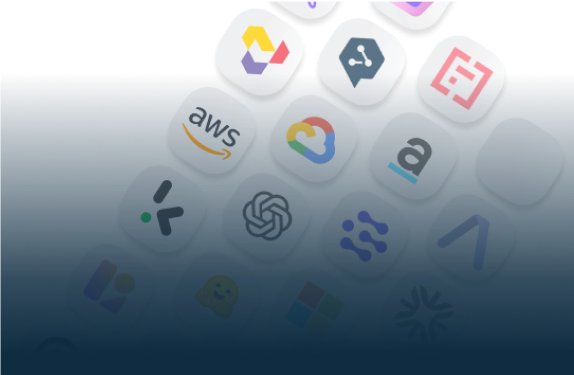
Start Your AI Journey Today
- Access 100+ AI APIs in a single platform.
- Compare and deploy AI models effortlessly.
- Pay-as-you-go with no upfront fees.

Ever wondered how to enhance Large Language Models (LLMs) with your own data? Enter retrieval-augmented generation (RAG)! This article explores RAG's benefits, mechanics, use cases, and implementation in Eden AI (AI Chatbot solution). Let's dive in!
Large Language Models (LLMs) have changed the way we interact with technology now with their amazing capabilities to generate high-quality human-like text, translate languages, create diverse forms of creative content and answer your questions in an informative way.
Despite this, LLMs face some limitations, particularly in their consistency of producing accurate and relevant responses as they lack a clear source for the generated data.
In response to this, researchers have introduced a new approach known as Retrieval-Augmented Generation (RAG), which combines the strengths of retrieval and generative models to improve the accuracy of LLMs.
RAG is a method that enhances the quality and relevance of LLM-generated responses by allowing them to access additional data resources without needing to be retrained.
Retrieval models are good at extracting relevant information from vast datasets, while generative models are good at generating creative text. So, RAG uses retrieval models to find relevant documents or data points and adds them to the LLM's prompt to produce more accurate responses.
RAG works by collecting and adding relevant documents or data points to an LLM's prompt to generate a more accurate response. Here's a step-by-step breakdown of the process:
One of the biggest advantages of using retrieval-augmented generation (RAG) is that it can help LLMs provide sources to users, allowing them to verify the answers just like one would check the sources in a research paper with footnotes, this will help build trust in the model's response.
Using RAG can also help clear up ambiguity in a user's query and reduce the chances of the model making wrong guesses or hallucinating and by doing this, it reduces the chances of the model producing incorrect or fabricated information.
What's more, the implementation of RAG can also enhance the scalability of a system, making it more adept at handling large datasets and intricate inquiries.
The RAG method can be summarized into a straightforward workflow comprising the following steps:
Choose an appropriate text embedding provider, such as Google, Cohere or OpenAI Ada for converting text into vector representations.
Establish a connection to a vectorial database, such as Elasticsearch, Faiss, Qdrant or supabase, where the embedded text data will be stored and searched.
Convert all existing data in your knowledge base, including PDFs, HTML documents, and audio files, into text representations using the chosen embedding provider. Apply preprocessing steps if necessary to handle different data formats and ensure consistency.
This workflow effectively utilizes text embeddings, semantic search, and a powerful LLM to provide comprehensive and relevant answers to user queries, leveraging the knowledge base and the user's query in a semantically meaningful way.
This workflow can be easily implemented using Eden AI's AI Chatbot solution –a user-friendly platform that streamlines the entire process.

Eden AI's AI Chatbot solution simplifies the first steps of the RAG workflow by offering an intuitive interface to upload and manage your data. Whether it's PDFs, HTML documents, or audio files, this template handles the data preprocessing for you, ensuring a smooth transition from raw information to text representations.
Connecting to a vectorial database becomes a breeze with Eden AI's AI Chatbot solution. The platform seamlessly integrates with popular databases such as Qdrant and supabase, allowing you to establish a robust connection for storing and retrieving the embedded text data.
With Eden AI's user-friendly AI Chatbot solution interface, performing semantic search and retrieving information is just a few clicks away. The platform takes care of transforming user queries into vector representations and efficiently identifies the K nearest neighbors within the vectorial database, presenting you with the most relevant text segments aligned with the user's query.
Eden AI's AI Chatbot solution empowers users by providing a range of powerful LLMs to choose from, including OpenAI GPT, Google Palm2, Anthropic Claude, and Cohere. This flexibility ensures that you can tailor your responses based on the specific requirements of your application.
Creating a context document and feeding it to the selected LLM is made simple with Eden AI's intuitive AI Chatbot solution. The platform enables you to effortlessly generate natural language responses by analyzing the context, incorporating information from the semantic search, and delivering comprehensive answers to user queries.
Eden AI's AI Chatbot solution prioritizes a user-centric experience, making the implementation of the RAG workflow accessible to both beginners and seasoned professionals. The platform's user-friendly design and powerful features combine to create a seamless and efficient process from data upload to response generation, it is also available as an API.
Here's a detailed guide on creating your personalized AI assistant using Eden AI's AI Chatbot solution. Alternatively, you can to watch the instructional video below:
Your chatbot can be integrated into a website or application to allow users to ask questions and receive responses based on the data the chatbot has been trained on. The repository on GitHub contains the source code for using and displaying Eden AI's AI Chatbot in a website, with branches for the unframed source code and the embed code.
RAG, an innovative technique for boosting LLM accuracy and consistency is becoming an indispensable tool in the field of natural language processing. Its integration in Eden AI's AI Chatbot with RAG simplifies the process, allowing users to tap into the power of text embeddings, semantic search, and LLMs without the intricacies of manual implementation.


You can start building right away. If you have any questions, feel free to chat with us!
Get startedContact sales
